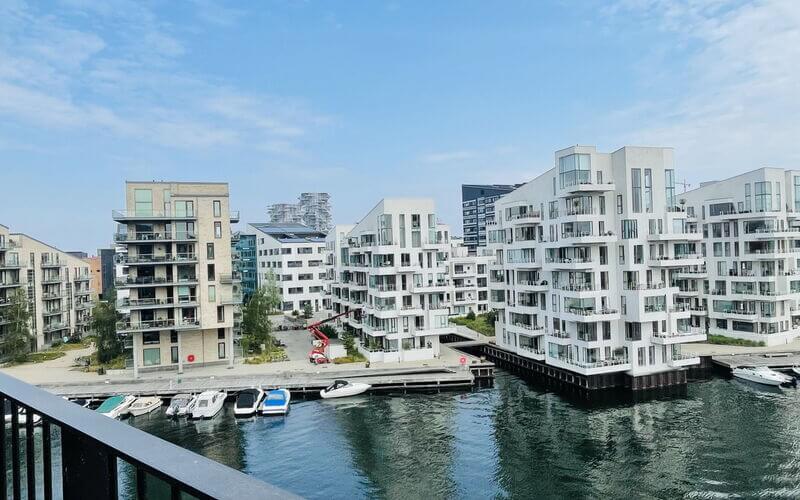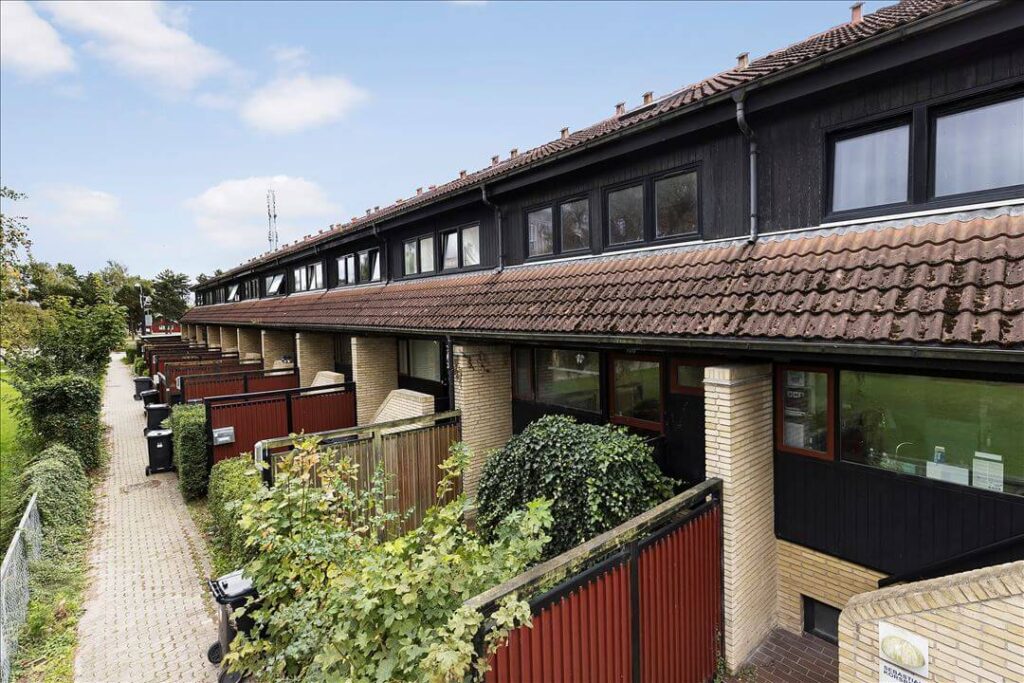As an EU citizen, buying a property in Copenhagen was smoother for me since Denmark’s residency requirements didn’t apply, but challenges like understanding local financing and legal processes still arose. The straightforward system made it manageable, and I secured my dream apartment in 2024 with relative ease. Non-EU citizens, however, face extra hurdles like residency permits, so I’ll share tips for them too. In this guide, I’ll walk you through the step-by-step process I followed to navigate Denmark’s property market, offering insights for all foreigners. Ready to own your Danish home? Let’s begin!
Navigating Denmark’s Property Market as a Foreigner
Denmark’s real estate market offers opportunities for foreigners, but strict regulations require careful planning. This guide provides a step-by-step approach to buying property in Denmark, covering legal requirements, financing, and cultural insights, ensuring you’re ready for a successful purchase.
1. Understand Denmark’s Property Ownership Rules for Foreigners
Denmark has specific laws governing property purchases by foreigners. Start by determining your eligibility:
- Step 1: Check Residency Requirements – You must have lived in Denmark for at least five years or hold a permanent residence permit to buy property without special permission.
- Step 2: Apply for Permission – If you don’t meet the residency criteria, apply to the Department of Civil Affairs under the Danish Ministry of Justice. You’ll need to prove strong ties to Denmark, such as employment or family connections.
- Step 3: Know the Exceptions – EU/EEA citizens working in Denmark or with a residence permit can often buy without permission if the property is their primary residence.
- Step 4: Explore Alternatives – Non-residents can bypass some restrictions by setting up a Danish company (like an ApS) to purchase property, though this involves more paperwork.
- Step 5: Research Restrictions – Holiday homes in coastal areas often have tighter rules to prevent speculative buying by foreigners.
- Step 6: Learn More – Visit the Department of Civil Affairs for detailed guidelines. For more on Copenhagen Cozy Neighbourhood, check this.

2. Secure Financing for Your Property Purchase
Financing a property in Denmark as a foreigner can be tricky due to stricter lending rules. Follow these steps:
- Step 1: Assess Your Budget – Property prices vary by region. In Copenhagen, expect to pay 35,000–60,000 DKK per square meter, while Aarhus averages 25,000–45,000 DKK.
- Step 2: Understand Down Payments – Danish law requires a minimum 5% down payment, but banks often don’t approve foreigners for this rate, citing various reasons or perceived risk. Expect 20-40% down payments depending on the bank. I secured mine with a 10% down payment—contact me, and I might refer you to my bank advisor.
- Step 3: Explore Mortgage Options – Banks typically finance up to 80% of the property value for residents, with the remaining 15% covered by a bank loan or savings. Foreigners may need a larger loan multiplier (up to 4x your annual pre-tax salary).
- Step 4: Compare Banks – Reach out to multiple banks, especially smaller and less popular ones, as they might offer more flexible terms or better mortgage rates for foreigners. Non-EU/EEA citizens may still face higher interest rates, so shop around diligently.
- Step 5: Consider Currency Transfers – If transferring funds internationally, use services like Wise to save on exchange fees.
- Step 6: Plan for Taxes – Land registration costs 1,750 DKK plus 0.6% of the purchase price. Annual property taxes range from 1% to 3% of the cadastral value.
3. Find the Right Property in Denmark
Denmark’s property market offers diverse options, from urban apartments to rural homes. Here’s how to search:
- Step 1: Choose Your Location – Copenhagen is priciest but vibrant. Aarhus blends history and modernity, while Aalborg offers a quieter waterfront lifestyle.
- Step 2: Use Online Portals – Browse listings on Boligsiden, a leading Danish property portal, to find homes matching your needs. I find my home with estate.
- Step 3: Work with a Real Estate Agent – Agents represent sellers, so consider hiring a buyer’s agent to advocate for you.
- Step 4: Evaluate Property Types – Decide between a permanent residence for year-round living or a non-permanent dwelling like a holiday home, noting the latter’s stricter rules.
- Step 5: Check Property Reports – Sellers provide condition reports detailing defects. Hire a surveyor for an independent evaluation, especially for houses.
- Step 6: Explore More – For regional insights, visit Visit Denmark.
4. Navigate the Legal Process with Confidence
The legal process in Denmark requires attention to detail. Follow these steps to ensure a smooth purchase:
- Step 1: Hire a Lawyer – Engage a local lawyer specializing in real estate to guide you through the process and ensure compliance.
- Step 2: Submit Your Application – If permission is needed, your lawyer can help submit your application to the Department of Civil Affairs, which may take up to 10 weeks.
- Step 3: Make an Offer – Once you find a property, submit a non-binding offer. Negotiate respectfully, as haggling isn’t common in Denmark.
- Step 4: Sign the Sales Agreement – After acceptance, the seller’s agent drafts the agreement. Ensure it includes bank and lawyer reservation clauses for your protection.
- Step 5: Register the Deed – Finalize the purchase by registering the deed with the Danish Court of Land Registration.
- Step 6: Understand the 5-Year Rule – If you haven’t lived in Denmark for five years and leave the country, you must sell the property within six months.
5. Plan for Additional Costs and Responsibilities
Owning property in Denmark comes with ongoing costs and legal obligations. Prepare accordingly:
- Step 1: Budget for Transaction Costs – Expect to pay 0.73% to 1.23% of the purchase price for notarial and legal fees, plus the land registration fee.
- Step 2: Account for Utilities – Water, electricity, and waste removal vary by municipality. A media license (207.67 DKK/month) is also required.
- Step 3: Get Insurance – Fire insurance is mandatory for property owners. Consider contents insurance for added protection.
- Step 4: Understand Bopælspligt – Most properties have a “living requirement,” meaning they can’t be empty for more than six months without renting them out.
- Step 5: Learn About Taxes – Capital gains on properties you’ve lived in are tax-free, but rental income is taxable.

6. Settle Into Your New Danish Home
Once the purchase is complete, it’s time to make your property your own. Here’s how to start:
- Step 1: Move In – Register your address with the Central Person Register (CPR) within a month if using the property as your primary residence.
- Step 2: Connect Utilities – Set up water, electricity, and internet services through local providers.
- Step 3: Embrace Danish Living – Join local communities, explore nearby attractions, and enjoy Denmark’s work-life balance.
- Step 4: Consider Rental Income – Denmark’s rental market offers yields of 2.9% to 5.6%, especially in cities like Copenhagen.
- Step 5: Plan Future Adventures – Discover more of Europe with our Travel Articles.
Top Tips for Foreigners Buying Property in Denmark
Make your property purchase in Denmark smoother with these insider tips:
- Start Early: Apply for permits and mortgages well in advance—processing can take weeks.
- Hire Experts: A local lawyer and buyer’s agent can save you time and money.
- Research Locations: Coastal areas have stricter rules for holiday homes—focus on urban centers if you’re new to Denmark.
- Understand Financing: Foreigners often need higher down payments, so save accordingly.
- Learn the Culture: Respectful negotiation and patience are key in Danish transactions.
- Check Zoning Laws: Ensure the property’s intended use aligns with local regulations.
- Explore More: For investment insights, see investinside.
With these tips, you’ll be well-prepared to buy property in Denmark in 2025.
Why Buy Property in Denmark in 2025?
Denmark’s stable economy, high rental demand, and quality of life make it a smart investment for foreigners. From Copenhagen’s vibrant streets to Aarhus’s historic charm, your Danish property awaits. Ready to start? Share your plans below!






0 Comments